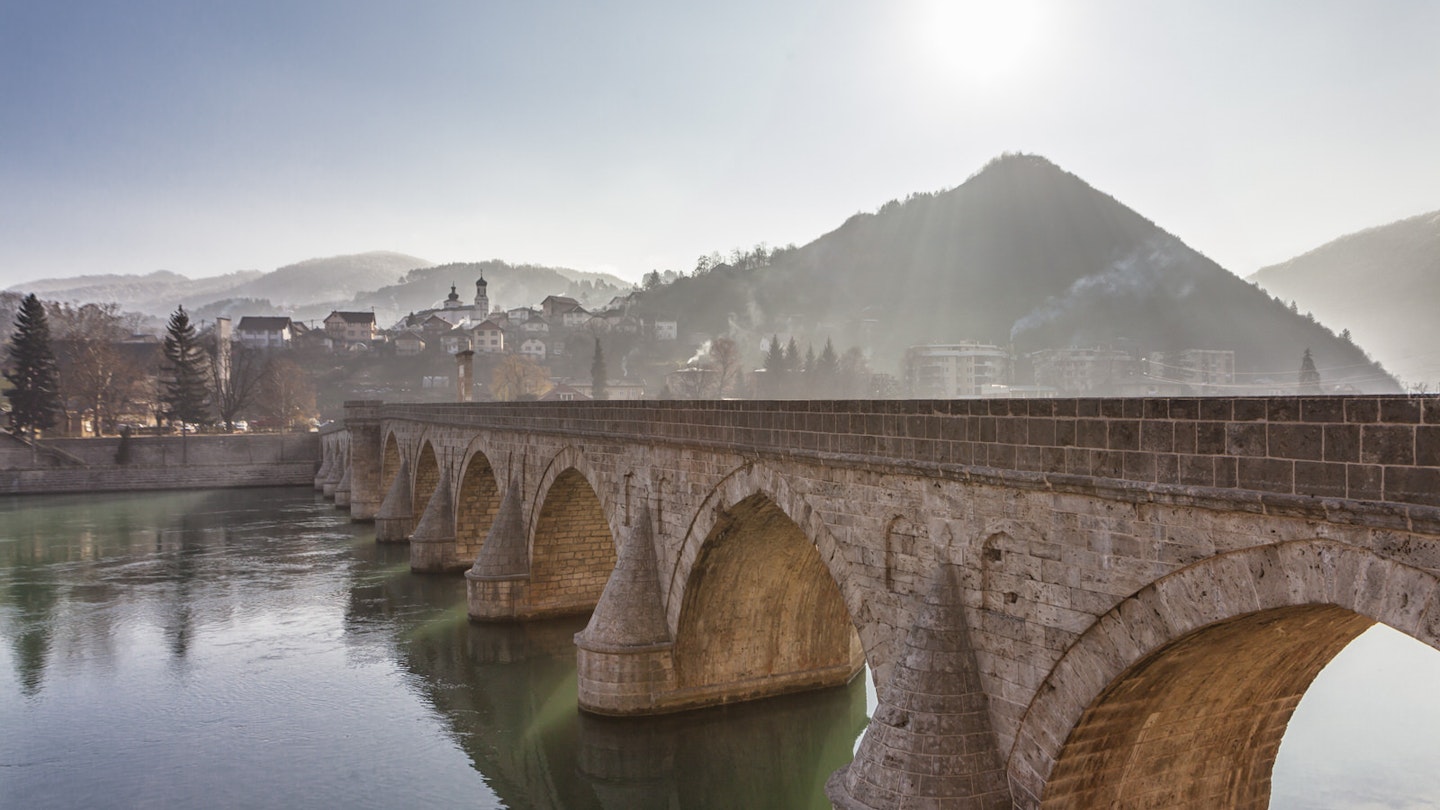Exploring the Islamic Heritage of Bosnia and Hercegovina
With over five centuries of Ottoman history and a Muslim-majority population, modern Bosnia and Hercegovina is rich in Islamic heritage. This land of Grand Viziers, magnificent imperial mosques, and delicious Muslim cuisine offers a profound insight into the history and influence of Islamic culture in Europe.
Awe-inspiring Architecture: The ‘Sinan’
Mimar Sinan, born around 1490, served as the chief architect for the Ottoman Empire. The magnificent ten-arched stone bridge over the River Drina in Višegrad represents Sinan’s architectural genius in Bosnia and Hercegovina (BiH). Commissioned by the locally born Ottoman Grand Vizier Sokollu Mehmet Pasha in 1577, this bridge has endured for over five centuries, standing firm and exuding timeless beauty.
Mystical Dhikr at Blagaj
At the mouth of the River Buna, the Sufi lodge in Blagaj is an awe-inspiring sight backed by towering cliffs. This revered tekija, established around 500 years ago, continues to serve as a spiritual haven. Visitors can experience dhikr sessions, a rhythmic chanting and movement that has marked the Islamic spiritual practice in BiH since its introduction.
Commemorating the Fallen: Srebrenica
The scars from the Bosnian War, particularly the events surrounding Srebrenica, remain deeply etched in the national consciousness. The Srebrenica Memorial Hall serves as a poignant reminder of the lives lost. Here, visitors can reflect on the somber history while walking through serene memorial gardens where names of the deceased are memorialized—a vital part of Bosnia’s Muslim heritage.
Admiring Bosnia’s Ottoman Mosques
Despite the historical efforts to diminish its Muslim monuments, Bosnia and Hercegovina continues to showcase some of the finest Ottoman mosques outside of Turkey. Sarajevo is home to the 15th-century Emperor’s Mosque and the grand Gazi-Husrevbey Mosque, which showcases classical Ottoman features. Both mosques are open to tourists and remain a testament to the country’s rich architectural and cultural heritage.
Delight in Traditional Ottoman Cuisine
When visiting, don’t miss the chance to try Bosnian ‘ćevapi’, which are akin to kebabs, served with freshly baked bread and mild spices. A local favorite is Zeljo, boasting an authentic atmosphere perfect for street food lovers. Follow your meal with a taste of baklava, a traditional dessert steeped in history, now available throughout Bosnia.
Bosnian Resilience: Stari Most
The Stari Most bridge in Mostar stands as a powerful symbol of Bosnia and Hercegovina’s resilience. Originally built in the 16th century and destroyed in 1993, it has been meticulously rebuilt using traditional methods. This landmark not only illustrates stunning architecture but also embodies the enduring spirit of the Bosnian people.
Religious Tolerance: The Sarajevo Haggadah
The Sarajevo Haggadah, one of the oldest in the world, highlights the region’s history of religious tolerance. This beautiful manuscript, preserved in the National Museum, serves as a reminder of the rich tapestry of cultures that have coexisted in Ottoman Sarajevo, once referred to as the ‘Jerusalem of Europe’ for its welcoming nature.
Savoring Bosnian Coffee
Experience Bosnian coffee, often mistaken for Turkish coffee, prepared in a unique fashion of sipping through a sugar cube. For an authentic experience, visit Rahatlook in central Sarajevo and enjoy its delightful atmosphere and selection of homemade cakes.
Understanding the Bosniak Identity
To appreciate the essence of modern BiH, one must understand the Bosniak identity—a term developed to describe the native ethnicity. At the Bosniak Institute in Sarajevo, housed in a historic hammam, visitors can explore pivotal documents and artworks spanning centuries, alongside an insightful exhibition on the Bosnian War.





